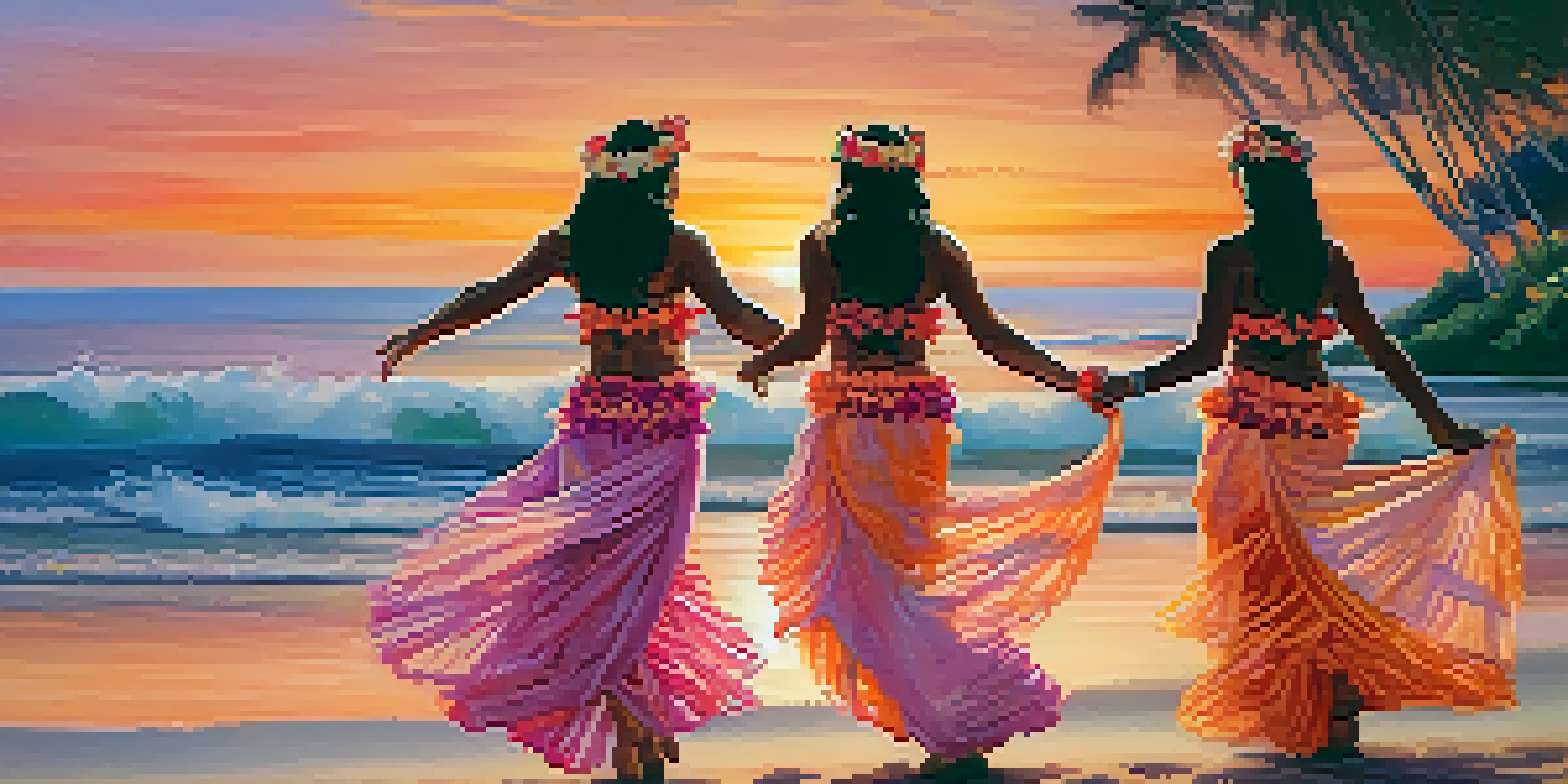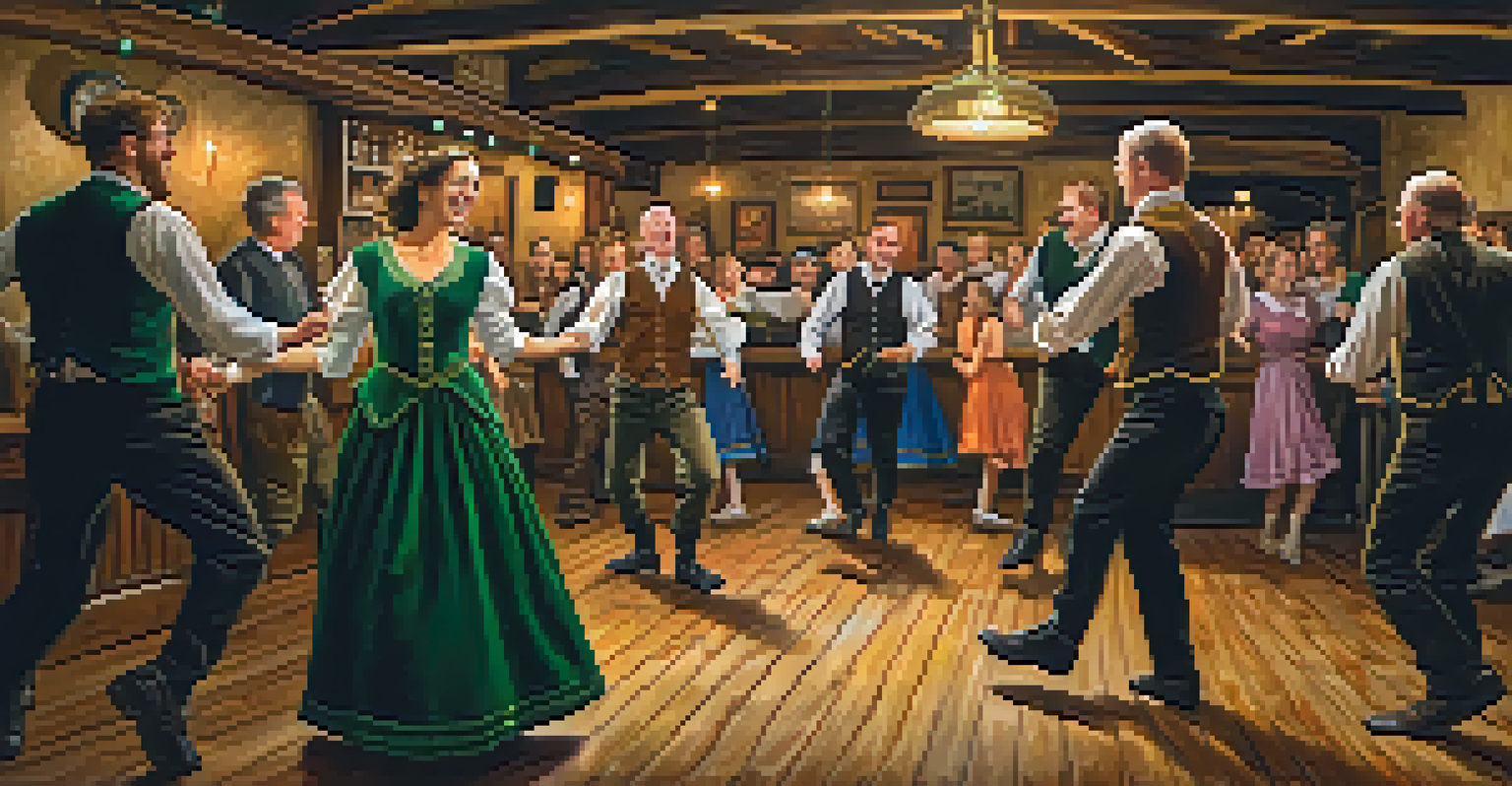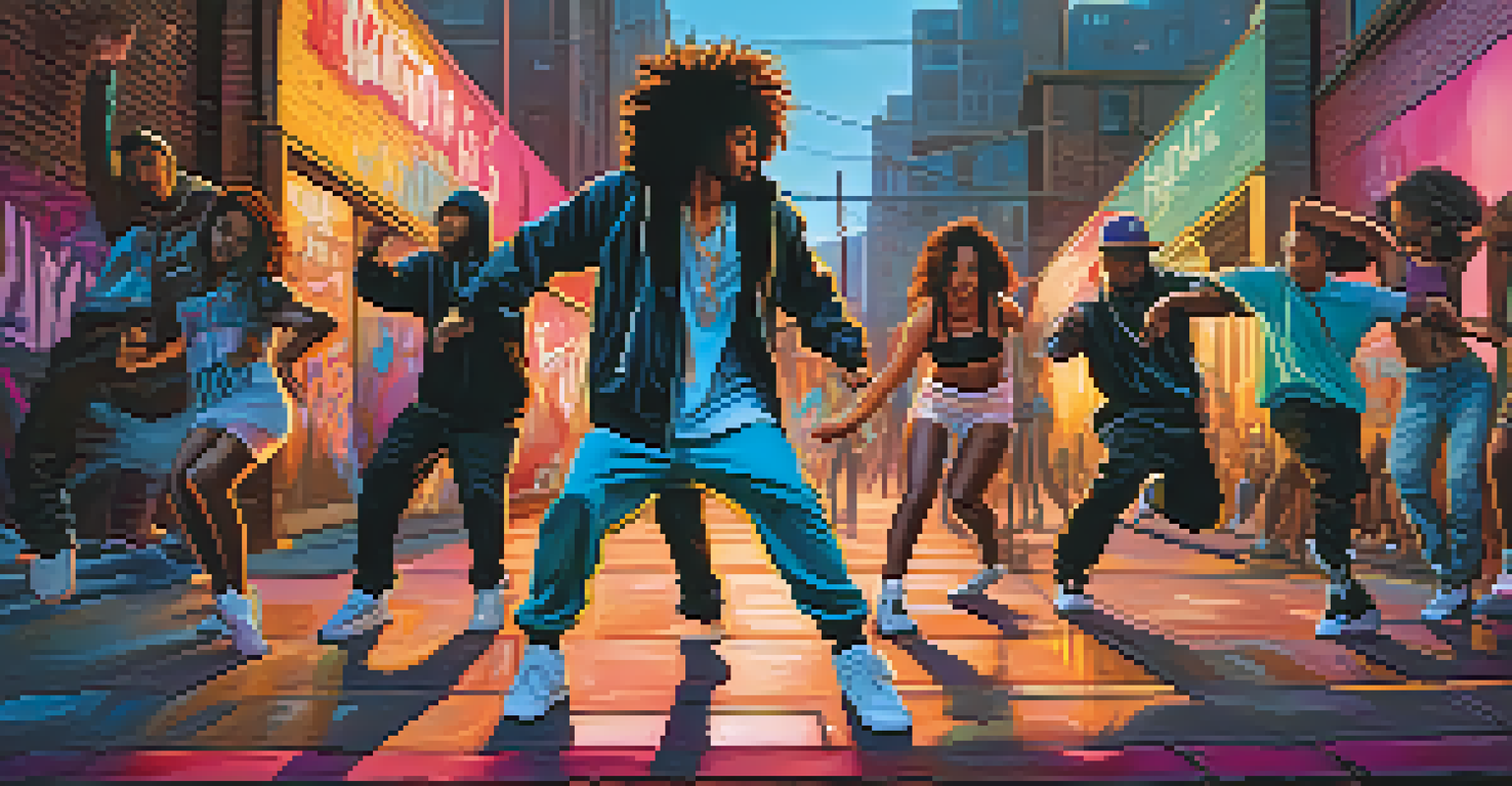Dance as a Cultural Expression in Global Music Traditions

The Role of Dance in Cultural Identity and Heritage
Dance serves as a powerful medium for expressing cultural identity. Through movements and rhythms, communities convey their history and values, making it an essential part of their heritage. For instance, traditional dances like the Hula of Hawaii narrate stories of the land and its people, intertwining culture with movement.
Dance is the hidden language of the soul.
In many societies, dance is not just entertainment; it’s a ritual that brings people together. Each step, each beat, encapsulates the essence of a community, reinforcing a sense of belonging. As cultures evolve, these dances adapt, reflecting changes while still honoring the past.
Moreover, dance often transcends borders, allowing for cross-cultural exchanges. When people from different backgrounds come together to share their dances, they cultivate understanding and appreciation for one another’s traditions, enriching the global tapestry of cultural expression.
Historical Significance of Dance in Global Music Traditions
Throughout history, dance has played a crucial role in various musical traditions around the world. From the court dances of Europe to the vibrant folk dances of Latin America, these movements have been integral to cultural celebrations and ceremonies. Historical records show how dance has evolved alongside music, shaping social norms and reinforcing community bonds.

Take the example of the Irish jig, which has its roots in ancient folk traditions. This lively dance not only accompanies traditional Irish music but also serves as a symbol of national pride and cultural resilience, especially during times of hardship. Such dances are often a reflection of the socio-political climate, capturing the spirit of the times.
Dance Reflects Cultural Identity
Dance serves as a vital expression of cultural identity, encapsulating community histories and values through movement.
As we delve into different cultures, we find that dance is often intertwined with significant events, such as weddings or harvest festivals. These moments provide an opportunity for communities to come together, celebrate, and preserve their unique musical heritage through dance.
Dance as a Form of Storytelling in Music
Dance often serves as a compelling storytelling medium, conveying narratives that words alone cannot express. In many cultures, dancers embody characters and emotions, bringing stories to life through their movements. For example, the classical Indian dance form of Bharatanatyam tells tales from mythology, allowing performers to express deep philosophical themes through intricate gestures.
Dance is the joy of movement and the heart of life.
This form of storytelling transcends language barriers, resonating with audiences on a deeper emotional level. Just as a song can evoke feelings, dance can create an atmosphere that captivates and engages. Each performance invites viewers into a world of imagination and creativity, fostering a shared cultural experience.
Moreover, dance can adapt and reinterpret stories over generations. As cultures change, so do the narratives expressed through dance, ensuring that these art forms remain relevant while honoring their roots. This dynamic nature of dance reinforces its significance in global music traditions as a living form of cultural expression.
Cultural Exchanges: How Dance Influences Music and Vice Versa
Cultural exchanges have always influenced the relationship between dance and music, creating innovative forms and styles. As people migrate and interact, they bring their dance traditions with them, often blending them with local music. A great example is the fusion of African rhythms with Caribbean dance styles, leading to vibrant genres like salsa and reggae.
These exchanges not only enrich musical landscapes but also influence the way communities express themselves through movement. When different dance styles intermingle, they create unique forms that reflect diverse cultural influences, showcasing the beauty of collaboration and creativity.
Dance as a Tool for Social Change
Through movement, dance empowers communities to challenge societal norms and advocate for social justice and change.
Moreover, contemporary dance genres, such as hip-hop, exemplify how music and dance evolve together. Originating from urban street culture, hip-hop dance incorporates elements from various styles, illustrating how cultural exchange can lead to new forms of expression that resonate globally.
The Impact of Technology on Dance in Global Music Traditions
In today’s digital age, technology has significantly impacted the way dance is created, shared, and experienced. Social media platforms like TikTok and Instagram have become powerful tools for dancers to showcase their talents, transcending geographical boundaries. This accessibility allows dance to reach wider audiences, fostering global appreciation for diverse styles.
Additionally, technology has influenced the production of music, leading to new possibilities in dance choreography. Electronic music, for instance, has inspired an array of contemporary dance forms, as artists experiment with rhythm and movement in innovative ways. The fusion of technology with traditional dance can also lead to exciting collaborations that breathe new life into age-old practices.
However, this rapid evolution raises questions about authenticity and cultural appropriation. As dance becomes more globalized through technology, it’s essential to recognize the origins of these movements and respect their cultural significance, ensuring that they are celebrated rather than exploited.
Dance as a Medium for Social Change and Activism
Dance has long been a powerful medium for social change, allowing communities to express their struggles and aspirations. Through movement, dancers can challenge societal norms, raise awareness about issues, and inspire action. For example, the Black Lives Matter movement has seen dancers using their art to advocate for racial equality and justice, creating impactful performances that resonate with audiences worldwide.
This form of activism through dance not only raises awareness but also fosters solidarity among marginalized communities. By highlighting shared experiences and creating a sense of unity, dance empowers individuals to voice their concerns and push for change. It transforms performance spaces into platforms for dialogue and action.
Technology's Impact on Dance
The digital age has transformed dance creation and sharing, fostering global appreciation while raising questions of authenticity.
Moreover, dance can serve as a healing tool in times of crisis. Communities affected by conflict or trauma often turn to dance as a means of expression, helping individuals process their experiences and find strength in collective resilience. This transformative power of dance reinforces its role as a vital form of cultural expression in the face of adversity.
The Future of Dance in Global Music Traditions
As we look to the future, the evolution of dance within global music traditions promises to be exciting and dynamic. With ongoing cultural exchanges and the influence of technology, new genres and styles will continue to emerge. This ongoing evolution ensures that dance remains a relevant and vital aspect of cultural expression.
Furthermore, as awareness of cultural heritage grows, there’s a renewed interest in preserving traditional dance forms. Communities are working to pass down their dances to future generations, ensuring that these cultural treasures are not lost in the face of globalization. This balance between innovation and preservation will shape the future landscape of dance.

Ultimately, dance will continue to be a reflection of our societies, embodying our values, struggles, and triumphs. As we embrace the diversity of dance across global music traditions, we celebrate not just the art itself, but the rich tapestry of human experience it represents.